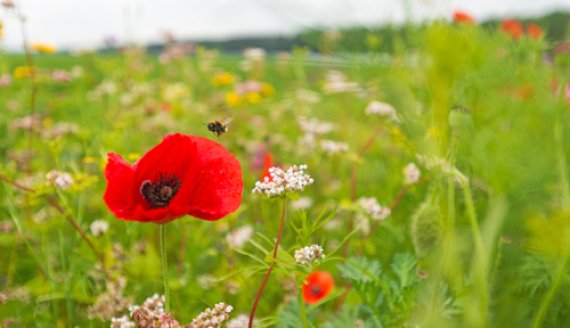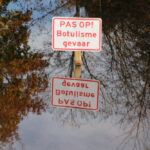Text: Monica Wesseling
These species are threatened because they make particular demands of their habitat. Precise knowledge of those requirements is indispensable to effective conservation.
These are the findings in a report by researchers including WUR scientists: Wild bees and hoverflies by landscape type. The research was prompted by questions from nature managers, municipalities and the agriculture sector about how to protect important pollinators such as wild bees and hoverflies.
Using existing distribution data, the researchers drew up a list of the bees and hoverflies inhabiting different landscapes. Each landscape has its own bee and hoverfly population. ‘Based on this, managers can take measures tailored to the species present or potentially present. Threatened bees and hoverflies have specific requirements in terms of their host and food plants, microclimate and landscape,’ says Jeroen Scheper, a research at the Plant Ecology and Nature Management chair group, and one of the report writers.
Hilly Limburg
The area of the Netherlands richest in threatened species is hilly Limburg, followed by the delta area. Both regions are home to species that only occur in that landscape type. The coastal dunes score just as high, but even urban areas house quite a few threatened species. The more vegetation, old walls, bee hotels and neglected corners full of weeds, the richer.
80 per cent of crop pollination is done by just 2 per cent of the bee species
From a previous WUR inventory, we know that 80 per cent of crop pollination is done by just 2 per cent of the bee species: a precarious situation. Scheper: ‘The advantage of it is that the number of individual crop pollinators can quite easily be boosted with relatively simple interventions such as sowing field margins. The handful of most important bees – especially bumble bees – are generalists and not at all fussy.’
With a bit more vegetation in agricultural areas, by planting hedges, for instance, or making ditch banks more natural, land managers could bring back a small number of threatened bees and hoverflies. But that only applies to species whose numbers are not too critically low yet, and whose survival is not seriously threatened.
The most threatened species need more precise measures, says Scheper. It remains for further research to clarify which specific demands the various threatened species make of their habitat, and what measures are therefore needed.

 Photo: Shutterstock
Photo: Shutterstock 

